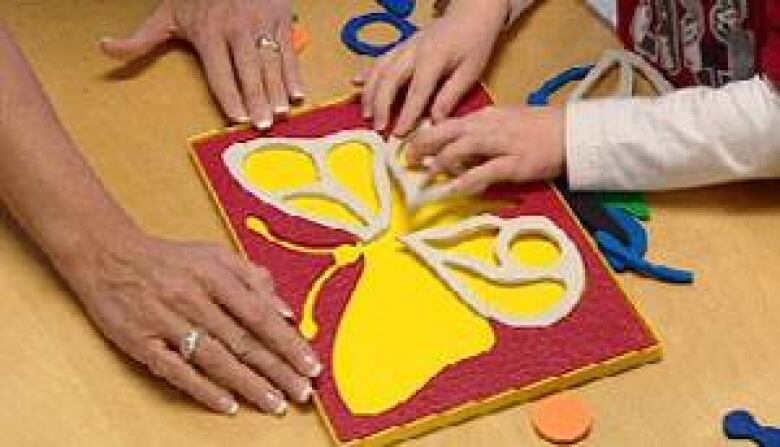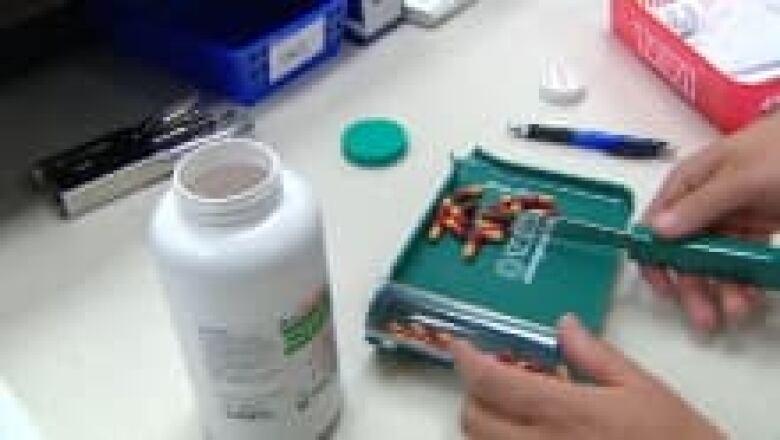Promises and performance: State of P.E.I. 2007-'11
Like many oppositions facing a long-serving government in an election, in 2007 the P.E.I. Liberals did what they could to convince the electorate the ruling party had made a mess of the province.
The poor state of the province was an undertone of the Liberal campaign. Leader Robert Ghiz brought forward a number of statistics that showed the Island last or near last in the country spending on post-secondary education, number of doctors, number of police officers and he promised to do better.
We have returned to the same sources Statistics Canada and the Canadian Institute for Health Information for an update on the trouble spots the Liberals identified. The full record is not yet available; most of the information is only updated to 2009.
Post-secondary education

In 2007, Statistics Canada said P.E.I. ranked at the bottom of the country in its spending on post-secondary institutions, committing just 4.5 per cent of its total government expenditures.
In 2009, Statistics Canada showed P.E.I. was no longer at the bottom for post-secondary spending. That dubious distinction now belonged to New Brunswick, with P.E.I. second from the bottom.
In a campaign speech on May 14, 2007, Ghiz outlined why he felt spending on post-secondary education was so important.
"We do not have a vast resource of timber, oil, or precious minerals," he said.
Post-secondary education funding
| Total | % government spending | |
| 2007 | $58 million | 4.5 |
| 2009 | $67 million | 4.4 |
"But we have people who are extremely loyal to their home - who have a tradition of hard work and community attachment."
Educating those people to innovate in the modern world is an economic development issue, Ghiz said.
According to Statistics Canada, P.E.I. could not really be said to have risen above New Brunswick, however, as the Island's rate of post-secondary education spending actually fell, to 4.4 per cent of total government expenditures. New Brunswick's spending had in the meantime fallen to 3.4 per cent.
Learning disability assessments
The Liberals accused Pat Binns's Progressive Conservatives of chronically underinvesting in education.

They complained of growing class sizes and a shortage of educational assistants, speech language pathologists, audiologists and psychologists. In particular, they focused on a two-year wait time for learning disability assessments.
"No parent or child should be forced to wait up to two years to be assessed for a learning disability or pay two-thousand dollars for private assessments," said the Liberal campaign literature.
They promised to reduce that wait time to 90 days.
Owning golf
Provincially-owned golf courses were a frequent target for Ghiz when he was in opposition. He said in 2007 he would actively seek to sell them off or lease them out. In 2011 the province is still operating all the courses it did in 2007. They lost about $1 million in 2007, and $800,000 in 2010.
In 2011, students coming into kindergarten are screened for learning disabilities, and screened again during their kindergarten year. If there is a referral they are seen for an initial consultation within 90 days. A full assessment, however, can still take more than two years.
Last year the director of student services for the Eastern School District said there werenot enough school psychologistsin the province, and estimated wait times at two and a half years.
Parents in the system told CBC News wait times are as bad as they were, if not worse. One woman says her son was put on a waiting list for a psycho-educational assessment in grade eight by the resource teacher and finally had it done in grade 11.
A doctor for every Islander
The Liberals turned to the Canadian Institute for Health Information to demonstrate a need for further investment in health care.

A report from CIHI listed P.E.I. at 150 doctors for every 100,000 population, the lowest ratio of doctors to population in the country. Ghiz took the opportunity to not just say he would improve access to doctors. He went considerably further.
"We believe in the following principle: Every Islander deserves access to a family physician. And, we will achieve that goal within the time frame of the initial mandate of a new Liberal government," Ghiz said at a news conference on May 7, 2011.
"I want you to write that one down because I expect to be held accountable for that commitment. No more arbitrary numbers or shell games in the health care system. I will not play that game, and if elected a new Liberal government will ensure that every Islander has access to a family doctor, period."
Spending on prescription drugs (per capita)
| P.E.I. | Canada | % of national average | |
| 2005 | $194 | $295 | 66 |
| 2009 | $264 | $340 | 78 |
Four years later the Liberal government has fallen short of that goal. Counting Islanders without a doctor is a moving target, as people and doctors come and go, but at the end of July there were more than6,000 Islanders on the patient registry, about the same as there were in June 2007.
The government was also not able to improve the Island's standing in doctors per capita. In 2009, the most recent statistics available, P.E.I. was up to 165 doctors per 100,000, but still last in the country.
Health Minister Carolyn Bertram said at the end of July there were 218 doctors practising on P.E.I., dropping the ratio back to 152 doctors per 100,000. Comparisons with the rest of the country aren't available for 2011.
The news on doctors from the most recent National Physician Survey was not all bad. In 2004,the survey showed only nine per cent of Island doctors were open to accepting new patients without any conditions. In 2010 that number had gone up to 18 per cent.
The Liberals also turned to CIHI to attack the government's record on providing medication to Islanders.
"By any measure available, Islanders have the poorest access to publicly funded medications in the country," said Ghiz at that same, health-care-focused news conference.
Looking at 2005 numbers from CIHI, the Liberals pointed out P.E.I. had the lowest per capita spending on prescription drugs in the country, at $194 per person. That was about two thirds the national average of $295. A 2009 report shows the numbers have improved, and the province has crept above British Columbia in the rankings.
Law enforcement

In addition to low numbers of doctors, the Liberals charged the Tories were lax on law enforcement.
In 2006, P.E.I. had 159.4 police officers per 100,000 people, the second lowest ratio in the country. In 2010, that number was up to 167.3 police officers per 100,000 people, but the ratio had slipped to the worst in the country.












_(720p).jpg)


 OFFICIAL HD MUSIC VIDEO.jpg)
.jpg)



























































































